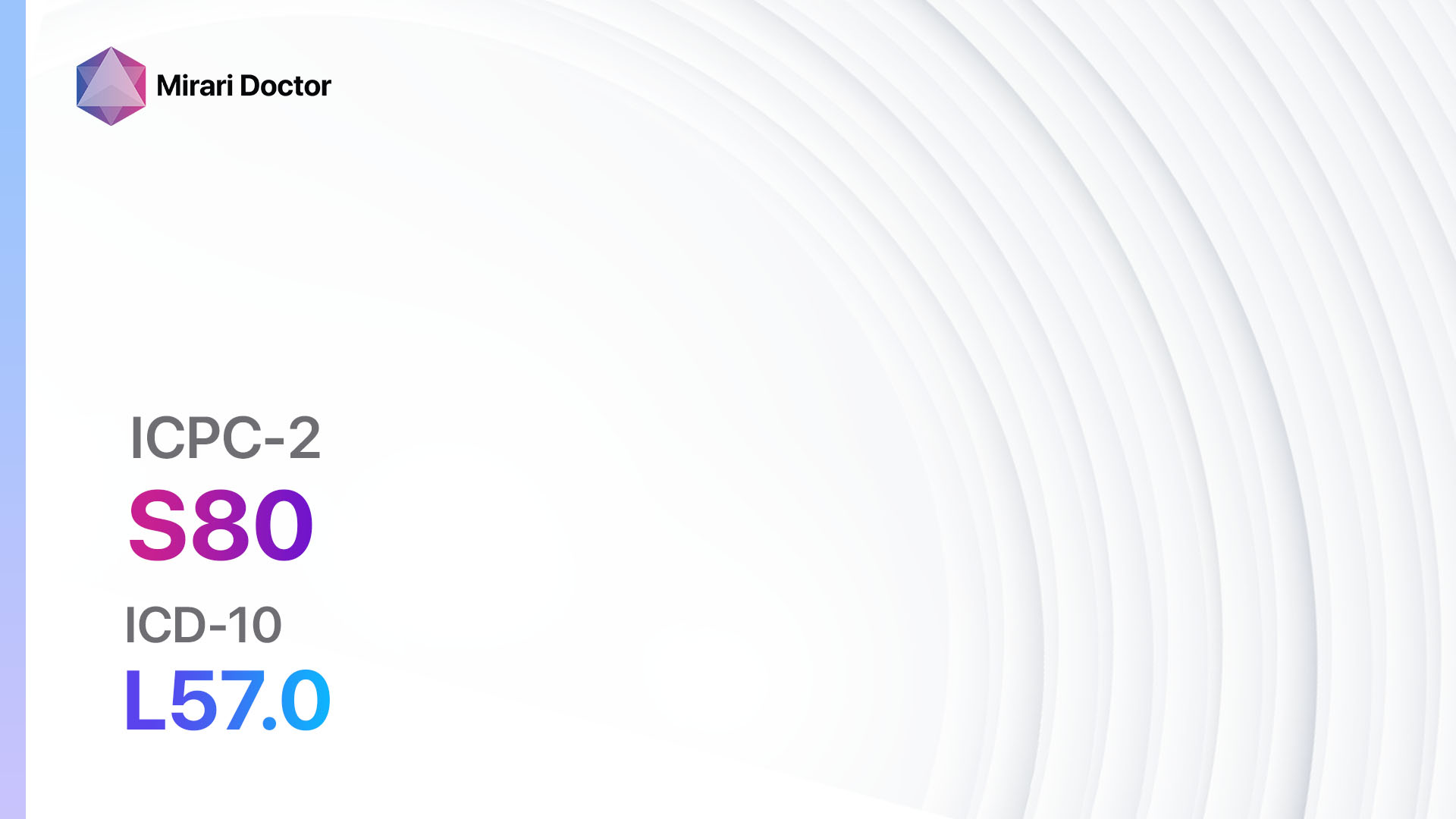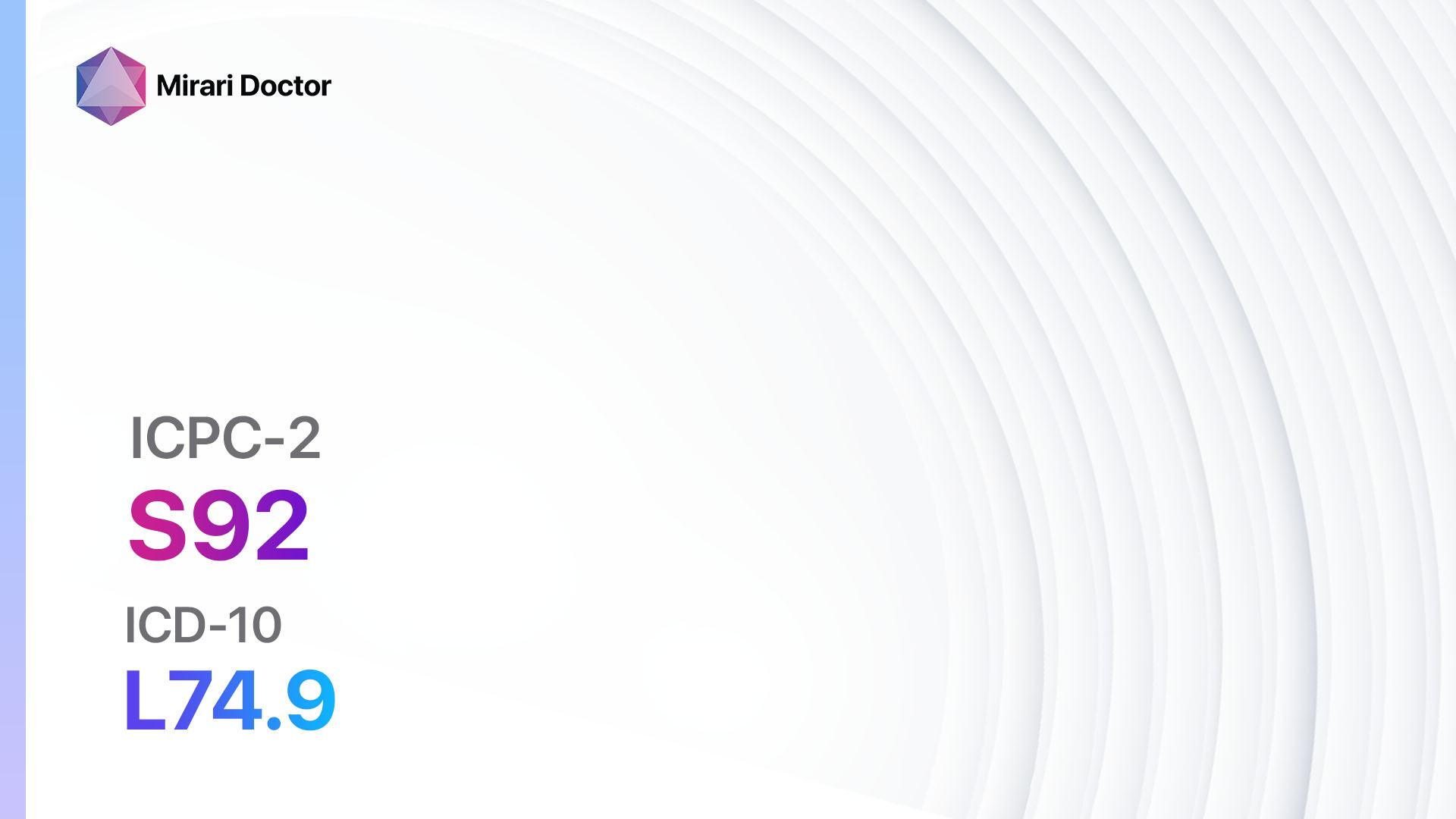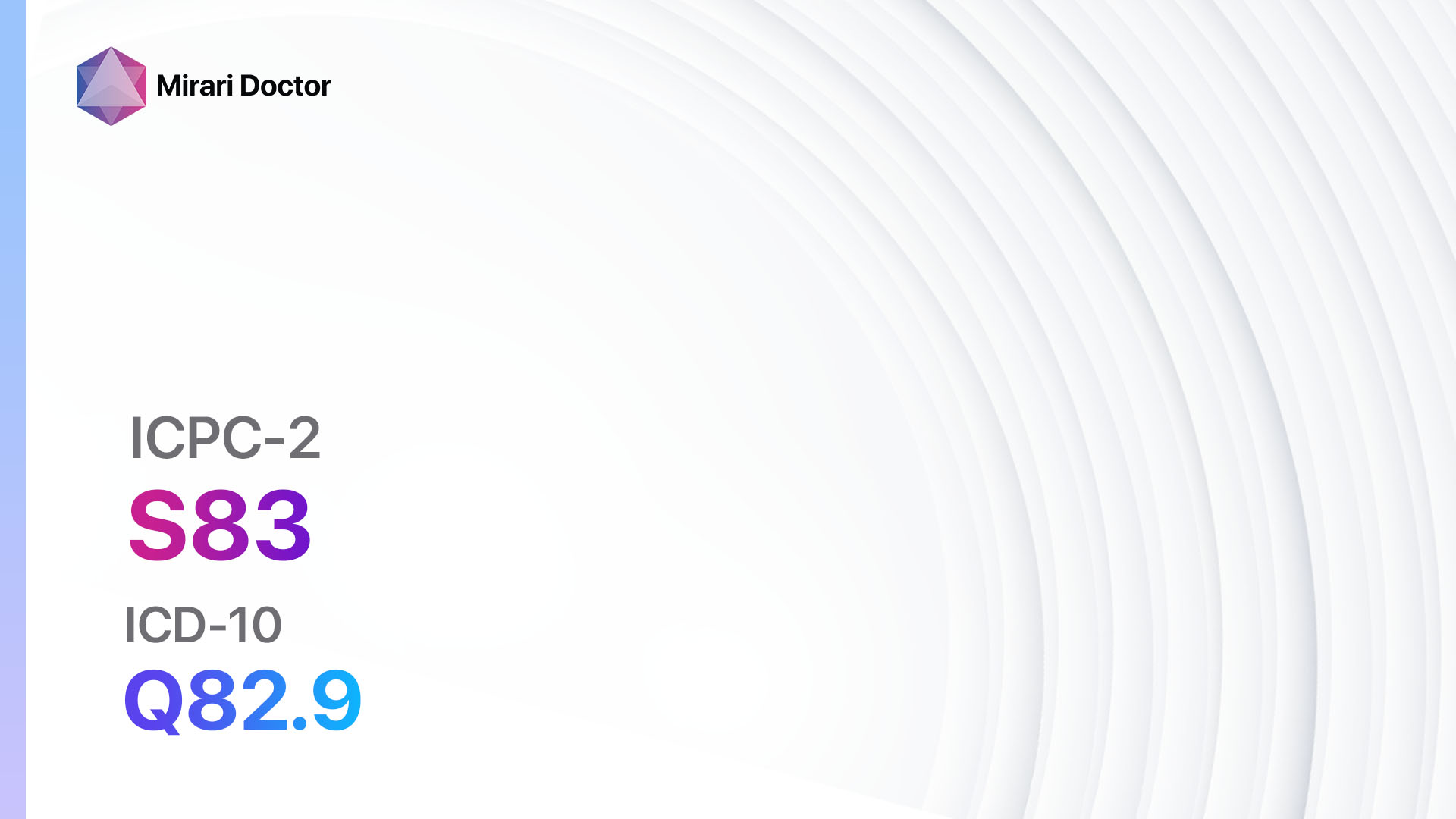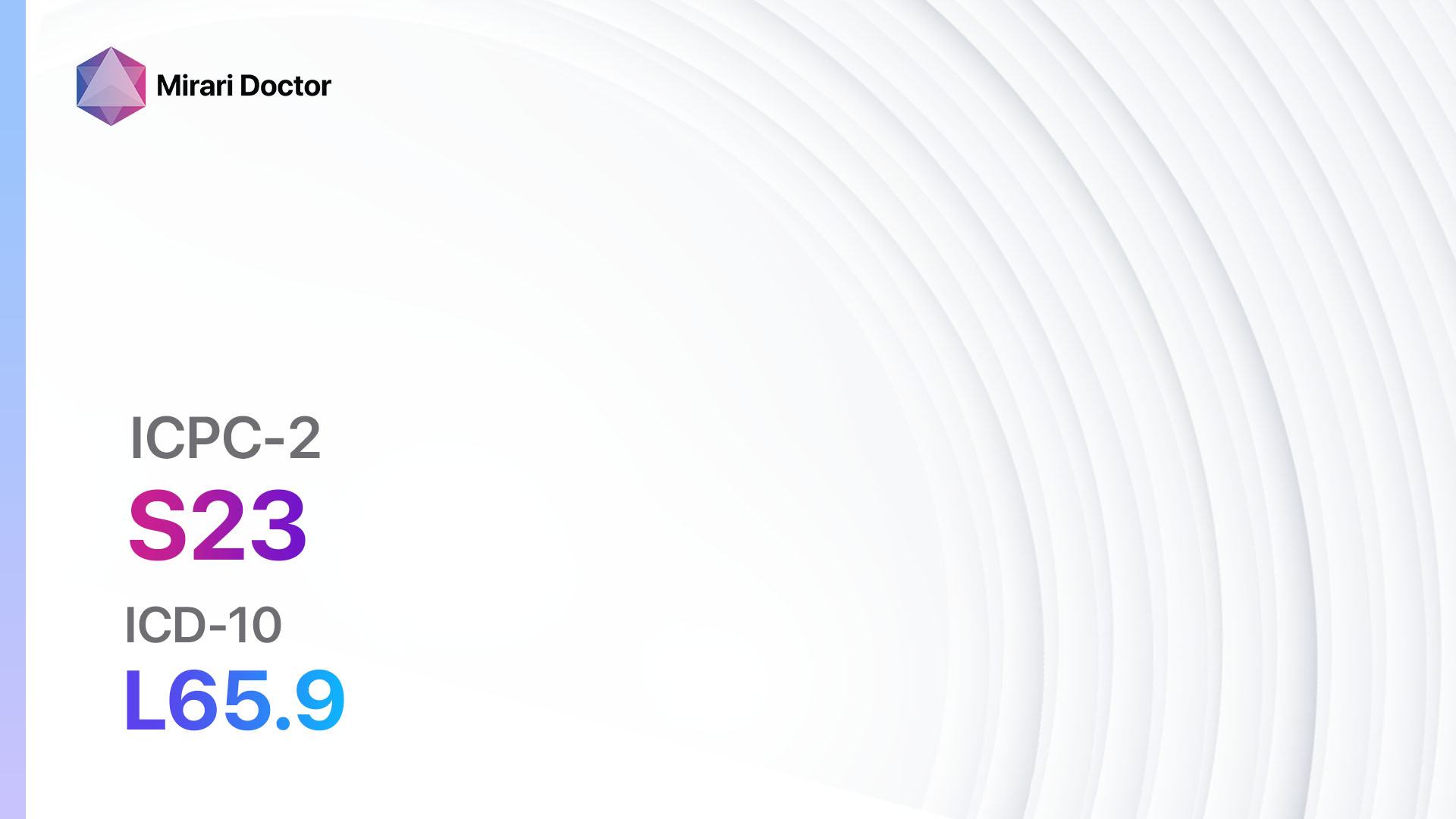
Introduction
Sebaceous cysts are noncancerous, closed sacs or cysts that develop within the skin. They are typically filled with a yellowish, oily substance called sebum.[1]Sebaceous cysts are common and can occur anywhere on the body, but they most commonly appear on the face, neck, and trunk.[2]The aim of this guide is to provide a comprehensive overview of the symptoms, causes, diagnostic steps, possible interventions, and lifestyle interventions for sebaceous cysts.
Codes
Symptoms
- Visible bump or lump on the skin[3]
- Skin-colored or slightly yellowish appearance[4]
- Smooth and round in shape[5]
- May be firm or soft to the touch[6]
- May be tender or painful if infected[7]
- May have a central opening or punctum[8]
Causes
- Blockage or damage to a hair follicle or sebaceous gland[9]
- Hormonal changes[10]
- Genetic predisposition
- Trauma to the skin
Diagnostic Steps
Medical History
- Gather information about the patient’s symptoms, including the appearance, size, and location of the cyst.
- Ask about any previous cysts or skin conditions.
- Inquire about any recent trauma or injury to the affected area.
- Assess the patient’s medical history for any underlying conditions that may contribute to the development of sebaceous cysts.
Physical Examination
- Inspect the cyst visually, noting its size, shape, color, and any signs of inflammation or infection.
- Palpate the cyst to assess its texture, consistency, and tenderness.
- Check for any signs of drainage or discharge from the cyst.
- Examine the surrounding skin for any signs of infection or inflammation.
Determine Severity
- Classify the sebaceous cyst based on severity and depth:
- Superficial cyst: Located near the surface of the skin and easily visible.
- Deep cyst: Located deeper within the skin layers and may require further evaluation or imaging.
Laboratory Tests
- No specific laboratory tests are typically required for the diagnosis of sebaceous cysts.
- In cases of suspected infection, a wound culture may be performed to identify the causative bacteria.
Diagnostic Imaging
- Diagnostic imaging is generally not necessary for the diagnosis of sebaceous cysts.
- However, in cases where the cyst is deep or there is suspicion of an underlying mass, imaging modalities such as ultrasound or MRI may be used to visualize and assess the cyst.
Other Tests
- Other diagnostic tests are usually not required for the diagnosis of sebaceous cysts.
- However, if there is suspicion of an underlying mass or malignancy, a biopsy may be performed to rule out other conditions.
Follow-up and Patient Education
- Advise the patient to monitor the cyst for any changes in size, shape, or symptoms.
- Instruct the patient on proper wound care and hygiene to prevent infection.
- Provide information on when to seek medical attention if the cyst becomes painful, inflamed, or shows signs of infection.
Possible Interventions
Traditional Interventions
Medications:
Top 5 drugs for Sebaceous Cyst:
- Antibiotics (e.g., Cephalexin, Clindamycin):
- Cost: Generic versions can be $3-$50/month.
- Contraindications: Hypersensitivity to antibiotics.
- Side effects: Nausea, diarrhea, allergic reactions.
- Severe side effects: Severe allergic reactions, Clostridium difficile infection.
- Drug interactions: Warfarin, oral contraceptives.
- Warning: Finish the full course of antibiotics as prescribed.
- Topical antibiotics (e.g., Mupirocin ointment):
- Cost: Generic versions can be $10-$30/tube.
- Contraindications: Hypersensitivity to antibiotics.
- Side effects: Local skin irritation, allergic reactions.
- Severe side effects: Severe allergic reactions.
- Drug interactions: None reported.
- Warning: Apply a thin layer to the affected area twice daily.
- Topical corticosteroids (e.g., Hydrocortisone cream):
- Cost: Generic versions can be $5-$15/tube.
- Contraindications: Hypersensitivity to corticosteroids.
- Side effects: Local skin irritation, thinning of the skin.
- Severe side effects: None reported with short-term use.
- Drug interactions: None reported.
- Warning: Use sparingly and for a limited duration.
- Pain relievers (e.g., Acetaminophen, Ibuprofen):
- Cost: Generic versions can be $3-$10/bottle.
- Contraindications: Hypersensitivity to pain relievers, history of gastrointestinal bleeding.
- Side effects: Upset stomach, liver damage (with excessive use).
- Severe side effects: Severe allergic reactions, gastrointestinal bleeding.
- Drug interactions: Warfarin, other NSAIDs.
- Warning: Follow the recommended dosage and duration.
- Intralesional corticosteroid injections (e.g., Triamcinolone acetonide):
- Cost: Varies depending on the healthcare provider and insurance coverage.
- Contraindications: Hypersensitivity to corticosteroids, active infection.
- Side effects: Local skin atrophy, hypopigmentation.
- Severe side effects: None reported with appropriate use.
- Drug interactions: None reported.
- Warning: Administered by a healthcare professional.
Surgical Procedures:
- Incision and drainage: The cyst is cut open and drained of its contents. Cost: $100-$500.
- Excision: The entire cyst and its surrounding capsule are surgically removed. Cost: $500-$2,000.
- Laser treatment: Laser energy is used to vaporize the cyst. Cost: $500-$1,500.
- Cryotherapy: The cyst is frozen with liquid nitrogen to destroy the cells. Cost: $100-$500.
- Electrocautery: The cyst is burned off using an electric current. Cost: $100-$500.
Alternative Interventions
- Warm compress: Applying a warm compress to the cyst can help promote drainage and relieve discomfort. Cost: Free.
- Tea tree oil: Applying diluted tea tree oil to the cyst may have antibacterial properties. Cost: $5-$10.
- Apple cider vinegar: Applying diluted apple cider vinegar to the cyst may help reduce inflammation. Cost: $5-$10.
- Aloe vera: Applying aloe vera gel to the cyst may help soothe the skin and reduce inflammation. Cost: $5-$10.
- Turmeric paste: Applying a paste made from turmeric and water to the cyst may have anti-inflammatory properties. Cost: $5-$10.
Lifestyle Interventions
- Good hygiene: Practicing good hygiene, including regular washing and cleansing of the affected area, can help prevent infection and reduce the risk of cyst formation. Cost: Free.
- Avoiding trauma: Avoiding trauma or injury to the skin can help prevent the development of sebaceous cysts. Cost: Free.
- Healthy diet: Consuming a healthy diet rich in fruits, vegetables, and whole grains may promote overall skin health. Cost: Varies depending on food choices.
- Stress management: Managing stress levels through techniques such as exercise, meditation, or counseling may help reduce the risk of cyst formation. Cost: Varies depending on chosen stress management techniques.
- Avoiding tight clothing: Wearing loose-fitting clothing can help reduce friction and irritation on the skin. Cost: Varies depending on clothing choices.
It is important to note that the cost ranges provided are approximate and may vary depending on the location and availability of the interventions.
Mirari Cold Plasma Alternative Intervention
Understanding Mirari Cold Plasma
- Safe and Non-Invasive Treatment: Mirari Cold Plasma is a safe and non-invasive treatment option for various skin conditions. It does not require incisions, minimizing the risk of scarring, bleeding, or tissue damage.
- Efficient Extraction of Foreign Bodies: Mirari Cold Plasma facilitates the removal of foreign bodies from the skin by degrading and dissociating organic matter, allowing easier access and extraction.
- Pain Reduction and Comfort: Mirari Cold Plasma has a local analgesic effect, providing pain relief during the treatment, making it more comfortable for the patient.
- Reduced Risk of Infection: Mirari Cold Plasma has antimicrobial properties, effectively killing bacteria and reducing the risk of infection.
- Accelerated Healing and Minimal Scarring: Mirari Cold Plasma stimulates wound healing and tissue regeneration, reducing healing time and minimizing the formation of scars.
Mirari Cold Plasma Prescription
Video instructions for using Mirari Cold Plasma Device – S93 Sebaceous cyst (ICD-10:L72.3)
| Mild | Moderate | Severe |
| Mode setting: 1 (Infection) Location: 0 (Localized) Morning: 15 minutes, Evening: 15 minutes | Mode setting: 1 (Infection) Location: 0 (Localized) Morning: 30 minutes, Lunch: 30 minutes, Evening: 30 minutes | Mode setting: 1 (Infection) Location: 0 (Localized) Morning: 30 minutes, Lunch: 30 minutes, Evening: 30 minutes |
| Mode setting: 2 (Wound Healing) Location: 0 (Localized) Morning: 15 minutes, Evening: 15 minutes | Mode setting: 2 (Wound Healing) Location: 0 (Localized) Morning: 30 minutes, Lunch: 30 minutes, Evening: 30 minutes | Mode setting: 2 (Wound Healing) Location: 0 (Localized) Morning: 30 minutes, Lunch: 30 minutes, Evening: 30 minutes |
| Mode setting: 10 (Dermatitis/Fungus) Location: 0 (Localized) Morning: 15 minutes, Evening: 15 minutes | Mode setting: 10 (Dermatitis/Fungus) Location: 0 (Localized) Morning: 30 minutes, Lunch: 30 minutes, Evening: 30 minutes | Mode setting: 10 (Dermatitis/Fungus) Location: 0 (Localized) Morning: 30 minutes, Lunch: 30 minutes, Evening: 30 minutes |
| Total Morning: 45 minutes approx. $7.50 USD, Evening: 45 minutes approx. $7.50 USD | Total Morning: 90 minutes approx. $15 USD, Lunch: 90 minutes approx. $15 USD, Evening: 90 minutes approx. $15 USD | Total Morning: 90 minutes approx. $15 USD, Lunch: 90 minutes approx. $15 USD, Evening: 90 minutes approx. $15 USD |
| Usual treatment for 7-60 days approx. $105 USD – $900 USD | Usual treatment for 6-8 weeks approx. $1,890 USD – $2,520 USD | Usual treatment for 3-6 months approx. $4,050 USD – $8,100 USD |
 |
|
Use the Mirari Cold Plasma device to treat Sebaceous cyst effectively.
WARNING: MIRARI COLD PLASMA IS DESIGNED FOR THE HUMAN BODY WITHOUT ANY ARTIFICIAL OR THIRD PARTY PRODUCTS. USE OF OTHER PRODUCTS IN COMBINATION WITH MIRARI COLD PLASMA MAY CAUSE UNPREDICTABLE EFFECTS, HARM OR INJURY. PLEASE CONSULT A MEDICAL PROFESSIONAL BEFORE COMBINING ANY OTHER PRODUCTS WITH USE OF MIRARI.
Step 1: Cleanse the Skin
- Start by cleaning the affected area of the skin with a gentle cleanser or mild soap and water. Gently pat the area dry with a clean towel.
Step 2: Prepare the Mirari Cold Plasma device
- Ensure that the Mirari Cold Plasma device is fully charged or has fresh batteries as per the manufacturer’s instructions. Make sure the device is clean and in good working condition.
- Switch on the Mirari device using the power button or by following the specific instructions provided with the device.
- Some Mirari devices may have adjustable settings for intensity or treatment duration. Follow the manufacturer’s instructions to select the appropriate settings based on your needs and the recommended guidelines.
Step 3: Apply the Device
- Place the Mirari device in direct contact with the affected area of the skin. Gently glide or hold the device over the skin surface, ensuring even coverage of the area experiencing.
- Slowly move the Mirari device in a circular motion or follow a specific pattern as indicated in the user manual. This helps ensure thorough treatment coverage.
Step 4: Monitor and Assess:
- Keep track of your progress and evaluate the effectiveness of the Mirari device in managing your Sebaceous cyst. If you have any concerns or notice any adverse reactions, consult with your health care professional.
Note
This guide is for informational purposes only and should not replace the advice of a medical professional. Always consult with your healthcare provider or a qualified medical professional for personal advice, diagnosis, or treatment. Do not solely rely on the information presented here for decisions about your health. Use of this information is at your own risk. The authors of this guide, nor any associated entities or platforms, are not responsible for any potential adverse effects or outcomes based on the content.
Mirari Cold Plasma System Disclaimer
- Purpose: The Mirari Cold Plasma System is a Class 2 medical device designed for use by trained healthcare professionals. It is registered for use in Thailand and Vietnam. It is not intended for use outside of these locations.
- Informational Use: The content and information provided with the device are for educational and informational purposes only. They are not a substitute for professional medical advice or care.
- Variable Outcomes: While the device is approved for specific uses, individual outcomes can differ. We do not assert or guarantee specific medical outcomes.
- Consultation: Prior to utilizing the device or making decisions based on its content, it is essential to consult with a Certified Mirari Tele-Therapist and your medical healthcare provider regarding specific protocols.
- Liability: By using this device, users are acknowledging and accepting all potential risks. Neither the manufacturer nor the distributor will be held accountable for any adverse reactions, injuries, or damages stemming from its use.
- Geographical Availability: This device has received approval for designated purposes by the Thai and Vietnam FDA. As of now, outside of Thailand and Vietnam, the Mirari Cold Plasma System is not available for purchase or use.
References
- Zuber TJ. Minimal excision technique for epidermoid (sebaceous) cysts. Am Fam Physician. 2002;65(7):1409-1412, 1417-1418, 1420.
- Higgins JC, Maher MH, Douglas MS. Diagnosing Common Benign Skin Tumors. Am Fam Physician. 2015;92(7):601-607.
- Goldstein BG, Goldstein AO. Overview of benign lesions of the skin. UpToDate. 2021.
- Weir CB, St. Hilaire NJ. Epidermal Inclusion Cyst. StatPearls. 2021.
- Zito PM, Scharf R. Epidermoid Cyst. StatPearls. 2021.
- Rao K, Tehrani H. Excision of Epidermoid Cysts. Facial Plast Surg Clin North Am. 2019;27(4):553-557.
- Dutta M, Saha J, Biswas G, Chattopadhyay S, Sen I, Sinha R. Epidermoid cysts in head and neck: our experiences, with review of literature. Indian J Otolaryngol Head Neck Surg. 2013;65(Suppl 1):14-21.
- Hoang VT, Trinh CT, Nguyen CH, Chansomphou V, Chansomphou V, Tran TTT. Overview of epidermoid cyst. Eur J Radiol Open. 2019;6:291-301.
- Wollina U, Langner D, França K, Gianfaldoni S, Lotti T, Tchernev G. Epidermoid Cysts – A Wide Spectrum of Clinical Presentation and Successful Treatment by Surgery: A Retrospective 10-Year Analysis and Literature Review. Open Access Maced J Med Sci. 2018;6(1):28-30.
- Feng S, Zhuang Q, Liu S, et al. Clinicopathologic features and treatment of epidermoid cyst of the breast. Medicine (Baltimore). 2019;98(41):e17542.
Related articles
Made in USA




























